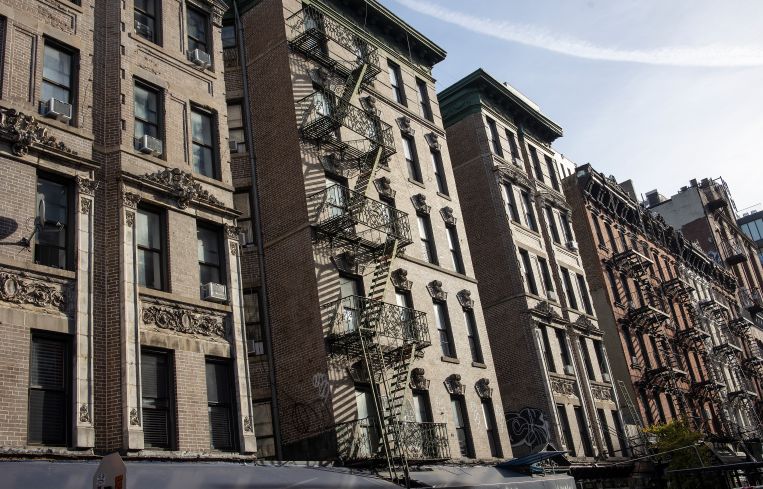The Three Ways to Solve New York’s Affordable Housing Crisis — Now
By Carlina Rivera August 29, 2025 8:00 am
reprints
During my two terms as a New York City Council member, I had the honor of serving my constituents and working alongside government colleagues to tackle a vast array of issues. Yet, few were as enduring and far-reaching as affordable housing.
In a city as diverse and vibrant as New York, eight years can feel like a lifetime. I’ve seen firsthand how our communities can transform in that time span when new voices emerge, old challenges take on greater urgency and neighborhoods evolve.
The affordability crisis has dramatically shifted the makeup and future of many of our ZIP codes. These changes aren’t limited to the five boroughs, but are happening across regions throughout our state. Good, mixed-income housing is undoubtedly the great equalizer. A lack of housing supply is confronting the teacher in Buffalo, the nurse in Yonkers, the small business owner in Rochester and the single parent in Manhattan — all feeling the crushing weight of housing insecurity.

The data confirms it: New York faces a statewide housing shortage of nearly 540,000 units, according to the Regional Plan Association. Meanwhile, a joint analysis by McKinsey & Company and the RPA warns that failing to close this gap could cost the tri-state region as many as 750,000 jobs and up to $1 trillion in economic output by 2035.
At the New York State Association for Affordable Housing (NYSAFAH), the mission ahead is to act urgently, strategically and collaboratively to restore affordability and stability to New York’s housing market. It’s done in three simple ways: Build more, keep more and spend smarter.
New York needs to dramatically ramp up housing production. Research from New York University’s Furman Center confirms that between 2010 and 2020, housing production failed to keep pace with population and job growth, particularly in urban areas.
To meet this moment, we must pursue a bold, immediate strategy that includes both more capital dollars and fewer regulatory obstacles. Without significant increases in capital funding to address growing construction costs and rising interest rates, shovel-ready projects will continue to stall, putting thousands of affordable units across the state at risk.
Every affordable unit we lose to a lack of funding and operating shortfalls undermines our progress. One Bronx building saw its net operating income collapse from $274,000 in 2020 to just $29,000 in 2024. A $506 million affordable housing portfolio recently defaulted after operating costs grew three times faster than revenues since 2021.
Preserving these homes must be a top priority. Stabilizing existing housing is often faster and more cost-effective, while allowing residents to remain in their communities. This goal requires bold preservation investments in operating subsidies, capital repairs and long-term maintenance planning. New York must establish an affordable housing relief fund to help developers, nonprofits and housing providers offset losses, reinvest in aging properties and address emergency capital needs that ensure affordability for residents.
Finally, to truly solve New York’s affordability crisis, we must confront the rising cost of developing and operating affordable housing. From property owners to government agencies, from the court system to tenants themselves, everyone shares this responsibility.
Across the state, operating costs are rising faster than revenues, leaving many affordable housing properties at risk of financial distress. Nowhere is this more evident than in the cost of insurance, which has become a crippling burden. Since 2019, insurance premiums for affordable housing properties have increased by 103 percent, consuming large portions of rent revenue and leaving little room for reinvestment, according to New York Housing Conference research.
Solutions must address a broad set of cost drivers that includes outdated zoning, slow permitting, prolonged construction time frames and bureaucratic lease-up inefficiencies, to name a few.
As a City Council member, I worked to streamline land use approvals, cut red tape and advocate for smarter budget allocations that delivered faster, more equitable results — an approach I bring with me now in this statewide role.
As the new president of the NYSAFAH, I see a clear mandate and even clearer momentum. A wave of newly elected mayors set to take office in virtually every major city in New York will bring new energy and renewed focus on cutting onerous delays and accelerating housing production. Whether politician, lender, developer or tenant, our end goals are the same: safe, stable, affordable housing. Now is the time to build on that commonality, forge stronger partnerships and deliver the solutions our state so urgently needs.
The path ahead is not without obstacles. Financial conditions may be tightening, but that only raises the stakes. Now, more than ever, private sector investment and public sector leadership must move in lockstep to deliver the housing New Yorkers desperately need.
This is our moment to act — not incrementally, but boldly. New York can lead a true supply-side revolution in housing, one that doesn’t just close the gap but redefines what’s possible.
Carlina Rivera is president and CEO of the New York State Association for Affordable Housing and a former member of the New York City Council from Manhattan.



